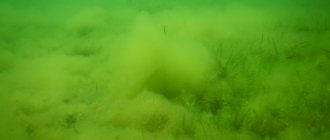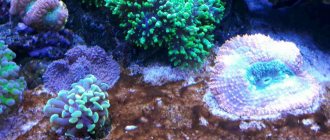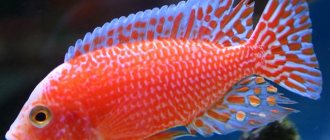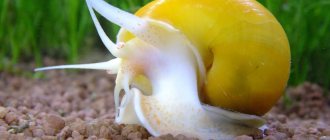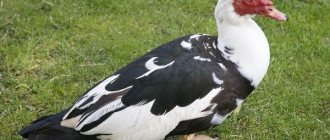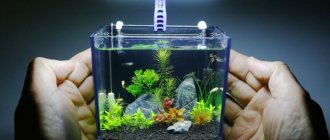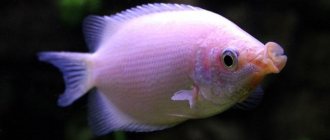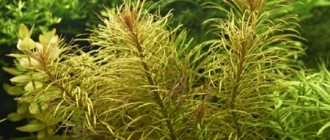Aquarium algae spoil the appearance of the reservoir and harm higher flora. Lower plants are found in the aquariums of beginners and professionals. When faced with abundant weed growth, novice aquarists find conflicting advice and do not know what to do.
Description
In reservoirs with an established biological environment, weeds are present in small quantities. It is worth worrying when faced with their rapid growth. Often a green coating appears on the walls of the aquarium, methods of combating which are discussed in a separate article. To combat lower vegetation in an aquarium, it is important to identify the type of algae. This way you are guaranteed to get rid of parasitic flora and not harm other inhabitants of the reservoir.
What types of algae are there?
All types of aquarium plants can be divided into two large groups - lower and higher plants. Algae (Algae) belong to lower organisms, in contrast to higher plants (mosses, ferns, mosses, horsetails, holosperms and angiosperms). They do not have real roots, leaves, or stems. These most ancient representatives of the fauna can consist of one or many cells, have microscopic sizes or grow tens of meters.
Regardless of the variety, the cells of all algae contain the pigment chlorophyll, which is involved in the process of photosynthesis and reproduce by spores or division.
In order to avoid problems when maintaining an indoor pond, it is important to know the types of algae and their names. All algae are divided into 5 orders:
- Blue-green (Cyanophyta) or cyanobacteria, having the simplest structure, are the most tenacious organisms and easily adapt to changes in the external environment. They multiply very quickly and are able to quickly cover the entire aquarium with a foul-smelling mucous bright green, blue or brown-green film. Blue-green algae form colonies of various colors - from bright green to bluish and brown-green.
- Green (Chlorophyta). The most famous are chlorella, monostroma, sea lettuce, stagedesmus, and glitter.
- Brown plants (Phaeophyta) are multicellular plants that prefer salty sea water and contain the coloring pigment fucoxanthin. One of the representatives of brown algae, kelp or seaweed, is of great economic importance.
- Diatoms (Diatomophyta) are unicellular or colonial organisms that, due to their red-brown color, are often confused with brown algae. One of the varieties of diatoms, blackbeard, which parasitizes other aquatic plants, is considered the most unwelcome guest in an indoor pond.
- Red (Rhodophyta) or scarlet. All one and a half thousand known species of scarlet grass belong to multicellular organisms. Among them there are very beautiful varieties that are successfully grown in indoor ponds - gelidium, bangie, floridae, phylloflora.
Red and Green Algae in the Aquarium
In the aquarium hobby, types of algae are often described based on the appearance of the plant:
- Filamentous - hair, fuzz and thread algae, spirogura, oedogonium (fluff), chlamydomonas, growing on stones, soil, glass. Different types of filament grow in separate threads, in bunches, and curl into balls. If the lighting is too bright and there is a lack of oxygen in the water, they quickly fill the entire space of the aquarium. However, a small amount of these algae serves as a good addition to the basic diet of many fish and indicates a favorable microclimate in the reservoir.
- Fibrous - thin, thread-like formations that entangle the leaves and stems of other plants in a web, sometimes completely drowning them out. They grow rapidly in water oversaturated with nitrates.
- Floating Volvox algae resembles a green suspension floating in the water column. They appear when there is an excess of organic matter.
- Green spots are small algae that form small rounded formations on the walls of the aquarium and the leaves of plants. Their appearance indicates a lack of essential nutrients and non-compliance with the parameters of light, temperature, and hardness.
- Bouquets (bunches) are plants growing in bunches, the diameter of which reaches 3 cm.
Despite their bad reputation, there are many species of algae that can not only decorate an aquarium, but also bring considerable benefits. When deciding which algae is best for an aquarium, you should read their description:
- spherical cladophora (Aegagrophila sauteri), known as Aegagropyla Linnaeus, is a spectacular plant that takes the shape of a ball, purifying water from suspended matter;
- spirogyra (Spirogyra) - used as a substrate for the eggs of some types of fish;
- nitella (Nitella flexilis) or flexible glitter is an aquarium grass with thin, glossy, bright green “stems” covered with numerous needles;
- asparagopsis taxiformis is a pink and white seaweed with lacy leaves that looks great in saltwater aquariums;
- numerous varieties of seaweed caulerpa - bikinensis, brownii, ollivieri, serrulata, sertularioides, webbiana.
Important! Riccia is often mistakenly classified as algae, which actually belongs to liver mosses and Vallisneria, a plant from the genus of true plants of the watercrass family.
Asparagopsis taxiformis
Reasons for appearance
- Violation or absence of biobalance. If there is a high level of organic matter in the aquarium (rotted grass, uncollected grass, fish waste and leftover food), the weeds have many food sources. Excess organic matter occurs due to overcrowding, infrequent aquarium maintenance and overfeeding of fish.
- Excess or deficiency of phosphorus and nitrates. Higher flora cannot cope with excess fertilizer, so phosphates and nitrates are consumed by algae. And also the lack of nutrients creates a favorable environment for weeds.
- Excess or lack of light. With long daylight hours, lower greenery absorbs excess light, and the plants weaken. The lack of light, in turn, creates conditions for the proliferation of some weed species.
- Incorrect lamp spectrum. Higher flora needs light in the blue and red spectrum. Weeds love the warm yellow light that incandescent lights and sunlight provide.
Brown
Diatoms or brown algae are a brown coating on the walls of the aquarium, decor, and plant leaves. About 300 genera and 25 thousand species of diatoms are known.
The proliferation of brown algae in an aquarium leads to the fact that it looks dirty, unkempt, and the vegetation does not have the ability to carry out photosynthesis normally, so aquarists need to know how to deal with them.
In aquarium conditions, representatives of the genus Navicula, Pinnilaria and Cymbella are most often found. They are different in appearance, but the factors contributing to their appearance and control measures will be common to them.
Reasons for appearance. The development of diatoms, first of all, occurs in those aquariums where there is poor lighting and short daylight hours (less than six to eight hours), where the water is too cold (below 22 ° C) and untimely water changes.
Their distribution is also influenced by water pH levels above 7.5, high levels of silicates in the water, dense population of the tank, too much feeding of the inhabitants, excessive levels of nutrients and organic matter, too high levels of iodine in the water, a clogged filter, and untimely replacement of lighting lamps.
Brown algae spores enter with new inhabitants, plants, and objects from other, already contaminated aquariums.
Fighting methods:
- Regular water changes and cleaning.
- Install lighting of sufficient power and duration - at least eight hours a day.
- Heating water to 24-25°C.
- Planting underwater plants.
- Mechanical removal.
- Bringing the number of inhabitants to normal for the volume of the aquarium.
- Strict dosing of feed and removal of residues after five minutes.
- Normalizing the nitrate/phosphate ratio.
- Population of Otocinclus catfish (four to five per 100 l), Gyrinocheilus, Ancistrus, Siamese algae eaters, mollusks, horned snails, olive nerite snails, shrimp.
Thus, the appearance of any type of algae indicates the presence of some problem with the microclimate of the aquarium. There are species that you can get rid of quickly and easily, but there are others that will take months to fight.
First of all, preventive measures should be observed. So, the housing for fish should be located away from the rays of the sun. Aquarium water should be updated regularly. It is also necessary to plant underwater plants - if there are enough of them, the algae simply will not have anything left to eat.
Brown or diatoms
Brown algae appears as plaque on the walls of the aquarium, leaves and soil. Harmless to flora and fauna. They often appear in the aquarium of beginners due to unstable biobalance and lack of light. Aquarium algae thrives in hard water with a pH above 7.5. To prevent growth, replace the bulb with a more powerful one or add another light source. If you don’t wipe off the brown plaque, it will form a thick layer that is difficult to deal with.
Blue-green algae in an aquarium
Blue-green algae form a layer that covers plants and soil. Blue-green algae thrive on excessive light and high levels of nitrates and phosphates. This type of algae can produce toxins that are harmful to fish. Algae-eating fish often refuse to eat blue-green algae due to its bad taste. Ampularia can slow down the growth of this algae, but it is better to undertake serious treatment: completely turning off the lighting and even darkening the aquarium for 5-7 days in combination with massive water changes.
Red algae or black algae
They grow in tufts of gray, purple or reddish color, about 5 mm high. Also known as scarlets. They grow on all surfaces, in salt and fresh water. Purples are difficult to remove. They love hard water with strong currents. Preparations with glutaraldehyde are effective against them in combination with weekly water changes of up to 50% and thorough cleaning.
Vietnamese
The species is also called "stag antlers" because of the dark-colored branching tufts. Appears due to dead organic matter.
Black beard
Grows in black tufts. “Beard” is often confused with “flip-flop”, which is not a serious mistake, because the methods for getting rid of parasitic greenery are identical. If you notice that dark hairs have appeared on the plants in your aquarium, check out this article on methods to combat blackbeard.
Reds
In this section we have collected examples of red algae for you. You can read their descriptions and photos. There are not many aquarium species among them. In total, there are about 200 varieties of freshwater.
Red algae has many additional names, such as: purple algae, beard (black, red), brush, Vietnamese. What they all have in common is that they settle on the ends of leaves and stems of plants, snags, stones, have a dirty green, almost black color, and grow and reproduce at high speed.
The Vietnamese grows in the form of tassels and dark fibers, the beard - in the form of long branching threads, the black beard - in the form of branching threads, painted in a dark color.
Reasons for appearance. The factors that contribute to the appearance of purple spots will be common to all their types. This:
- excessive level of organic matter;
- strong current;
- installing the wrong light;
- overpopulation of the aquarium.
Greens
The group of green lower flora unites about 20 thousand species of unicellular and multicellular plants. Greenery inhabits mainly fresh water bodies.
Xenococus
Externally, xenococus appears as green dots on glass, forming a coating. Appears in densely planted herbal gardens and in half-empty aquariums. Causes: excess light and low carbon dioxide levels.
filamentous
Filament appears when there is a large amount of iron and a lack of phosphorus, which plays an important role in nutrition. Grows in thin interlacing threads. Easily removed mechanically.
Rhizoclonium
The light green weed looks like light cotton wool. Appears in aquariums with an unknown nitrogen cycle. Disappears after biobalance is established.
Spirogyra
It consists of fragile and slimy threads. It is difficult to get rid of algae as it grows at a high rate in the aquarium. The reason for growth is excess light and lack of nutrition. Turning off the lights in combination with introducing algae-eating fish and adding medications helps.
Cladophora
Weed with short filaments. It grows with weak filtration in stagnant water, as well as with a lack of carbon dioxide.
Methods of fighting and getting rid of aquarium algae
For all types of algae, the manual removal method is relevant:
Further, algae control is carried out using different methods:
Remember that it is not enough to simply destroy the lower vegetation; it is necessary to eliminate the cause of the abundant growth.
Reducing lighting in an artificial pond
Darkening the aquarium is effective against Xenococus, Spirogyra, Euglena and blue-green cyanobacteria. Do not turn on the light for 2-3 days, darken the aquarium by throwing a cloth over the top. If there are light-loving plants in the pond, temporarily transplant them into another container with the required level of light. Do not turn off the aeration, because algae absorb oxygen. After exposure, remove dead flora and change the water. Use this method in conjunction with introducing algae-eating animals.
Application of fast-growing vegetation
Grasses crowd out lower greens, consuming all the nutrients from the environment. The method is effective against green and red algae. After exposure, the plants can be removed from the aquarium. Fast growing ones include:
Cryptocorynes and Anubias are not suitable.
Using algae-eating fish
Introduce pets that eat lower flora in combination with other control measures. Beneficial animals include:
Chemical methods
Administer medications when other methods are ineffective. Chemicals negatively affect the biological balance of the aquarium. It is optimal to use special-purpose drugs whose name contains the word algo (algae). Household products like hydrogen peroxide and bleach will also work.
Carbon dioxide
The supply of carbon dioxide together with good lighting creates an unfavorable environment for lower plants. To combat algae, gradually increase the carbon dioxide content in the aquarium using homemade or purchased devices.
Hydrogen peroxide
Peroxide is sufficient in a concentration of up to 2.5 ml per 10 liters of water. Apply the solution pointwise to clusters of weeds, increasing aeration for the duration of exposure. If your fish become hypoxic, replace some of the water immediately. Peroxide kills cyanobacteria, blackbeard, euglena and Vietnamese. To remove parasites from leaves, soak the plants separately in a bath with a concentration of 4 ml of peroxide per 10 liters of water. After exposure, change 20-25% of the water.
Chlorine
Flora and fauna are susceptible to chlorine in different ways. Dilute chlorine in 30–40 parts of water. Take a twig or leaf on which algae has grown and lower it into the solution. If the greens turn white, dilute the preparation with water. While maintaining the natural color, add the solution to the aquarium gradually. Use once. Powerful aeration, water changes and removal of dead algae are required.
Nutrients
Reduce the amount of fertilizer applied, then algae growth will be sharply reduced. Change the water and add fast-growing plants to absorb excess nutrients.
Glutaraldehyde
Preparations and solutions containing glutaraldehyde are effective against green, filamentous and red algae. The solutions are used in herbal medicine and are safe for many plants. Use in a concentration of up to 12 ml per 100 liters of water. Apply the solution in the morning for a week.
What is the method of fighting black beard based on?
This method is based on the fact that the growth of plants and algae in an aquarium is limited by available macro- (nitrates, phosphates, potassium) and micro-fertilizers (iron, etc.). Moreover, according to Liebig’s law (I think it’s his), plant growth is limited to one element, i.e. if there is a lack of iron in the aquarium, then there is an excess of nitrates, etc. will not cause plant growth, and at the same time, these excess substances will be available to algae.
If there are sufficient nutrients, light, and carbon dioxide, higher plants can outpace algae in the fight for nutrients (especially phosphorus), which leads to the death of algae.
Of the two macronutrients, the most important are nitrates and phosphates. If the aquarium has poor filtration and is not cleaned, then there is a lot of organic matter in the water that causes the growth of algae, such as blue-green algae. However, even with good bio-filtration, there is an excess of phosphates and nitrates in the aquarium. These substances are obtained as a result of the vital activity of fish (which produce ammonia and ammonium, which is converted into nitrates during bio-filtration) and from substances found in fish food.
Phosphates, even at low concentrations (0.5-1 mg/l), lead to algae growth. Therefore the most stable aquarium. if in it the growth of plants (and algae, respectively) is limited by phosphates. Plants are able to absorb even minute amounts of phosphates, depriving algae of them. As practice shows, if the aquarium is limited in nitrates, iron or potassium, then algae will inevitably appear in such a system, since the plants will not be able to absorb organic matter from the water.
This is the basis for the method of biological control of algae - by maintaining an optimal balance of fertilizers, light and CO2.
The method of effective bio-filtration of an aquarium using plants is based on the same principles.
How to get rid of a black beard
First of all, it requires patience and hard work. If the aquarium is neglected, it may take several weeks, or even months, to bring it into balance. To paraphrase Lenin’s famous article on Marxism (those who studied this rubbish remember), we can say that there are three sources and three components of anti-black-beardism. Three sources - patience, work and a head on your shoulders (as in all aquarium matters). Three components - fertilizers, light, carbon dioxide. Light and carbon dioxide are considered separately. They are necessary conditions for successful algae control. It must be remembered that if one of the conditions is not met, for example, in the presence of light and fertilizers, but the absence of carbon dioxide, it will be very difficult or impossible to overcome algae.
The main idea is discussed above. In practice, this comes down to the following points (despite their apparent complexity, they are easy to implement in practice):
- Keep the aquarium clean, remove organic matter, nitrates, phosphates, etc. from it, which is eaten by algae - change the water. At first, when the aquarium is neglected, a daily change of 10-25% of the water may be required. A weekly replacement of 10-25% is also necessary in the absence of algae. Limit the amount of food, it should be given as much as the fish can eat in 3-5 minutes; fish very rarely die of hunger (from overeating much more often). Clean the bottom of food residues and dirt. This can be done every time you change the water. Get fish that will pick up leftover food from the bottom. Think about it - it might make sense to reduce the number of fish in the aquarium to reduce the amount of dirt. Make sure that the water you pour into the aquarium does not contain nitrates or phosphates. Otherwise, there is little point in replacing the water. You can find out the water parameters by measuring them or by contacting a water supply station. If there are nitrates/phosphates in the water, then you need to think about filtering it through ion exchangers or using distilled water (with the addition of calcium salts, etc. to ensure its hardness). Changing the water is the most important condition for success.
- Use more light. Although light causes green algae to grow, sufficient light is necessary for plant growth. The green algae will then go away on its own. On average, it is necessary (depending on the type of plant and the amount of CO2) 0.5-1 W/liter of fluorescent light. Light should be no more than 10-12 hours a day.
- Install a CO2 system. There is absolutely no need to run out and buy a branded cylinder for a lot of money. A simple bottle of yeast is enough for successful plant growth.
- Add fast-growing plants. Anubias and cryptocorynes cannot defeat algae - this requires plants that suck nutrients from the water. Then they can be deleted. Trim such plants regularly - young shoots absorb nutrients from the water more actively. For long-stemmed plants. you can remove the lower part and plant the upper part in the ground.
- Feed the plants with fertilizers. Plants need them to grow successfully. use the ready-made mixture, making sure that it does not contain phosphates (your task is to limit their amount). The presence of nitrates in the mixture depends on their level in the aquarium. Usually they are not needed. Good commercial mixtures do not contain phosphates or nitrates. You cannot use fertilizers for ordinary plants - they contain a lot of phosphates/nitrates. The presence of potassium fertilizers is necessary - they are very important for plant growth and are usually in short supply in the aquarium. They can be added in excess (within reasonable limits) and do not lead to algae growth. Microelements are absolutely essential - especially iron, without which plants cannot grow. One way is to use a ready-made mixture. It is more convenient for beginners. You can also make the mixture yourself, which allows you to vary the elements, adapting to specific conditions - especially the level of nitrates, which should be about 5 mg/l. Zero nitrate levels cause plants to stop consuming phosphates and this leads to algae growth.
- Try to prevent nutrients from being washed out of the soil. Plants are able to absorb substances from the soil, and algae, which do not have roots, can only absorb substances from water. Therefore, do not use a bottom filter with strong currents (UGF, RUGF). Add fertilizer (clay balls) to the soil. Make optimal soil for plants.
- Get fish that eat algae, such as the Siamese algae eater, Ancistrus, etc. Let them do some of the work.
- Avoid introducing algae with new plants. They can be disinfected. Blackbeard is not spread by airborne spores. In any case, fish must be kept in quarantine. At the same time, it is necessary to change the water, allowing them to empty their stomachs, where there could be algae spores. Equipment - such as nets, etc. must be disinfected to avoid introducing algae (and other infections) from one aquarium to another.
By following these rules, it is quite possible to control algae in your aquarium and keep an aquarium full of plants and without a trace of algae.
In the case of black beard, it will usually start to turn white and then fall off after a few weeks, being replaced by green algae. They will then disappear too.
